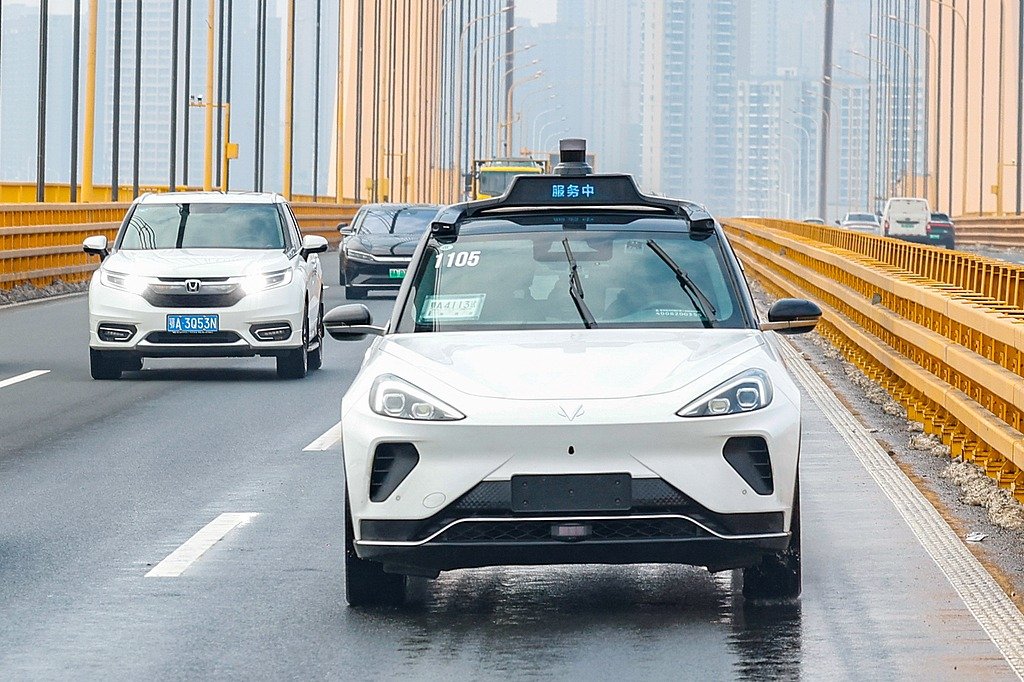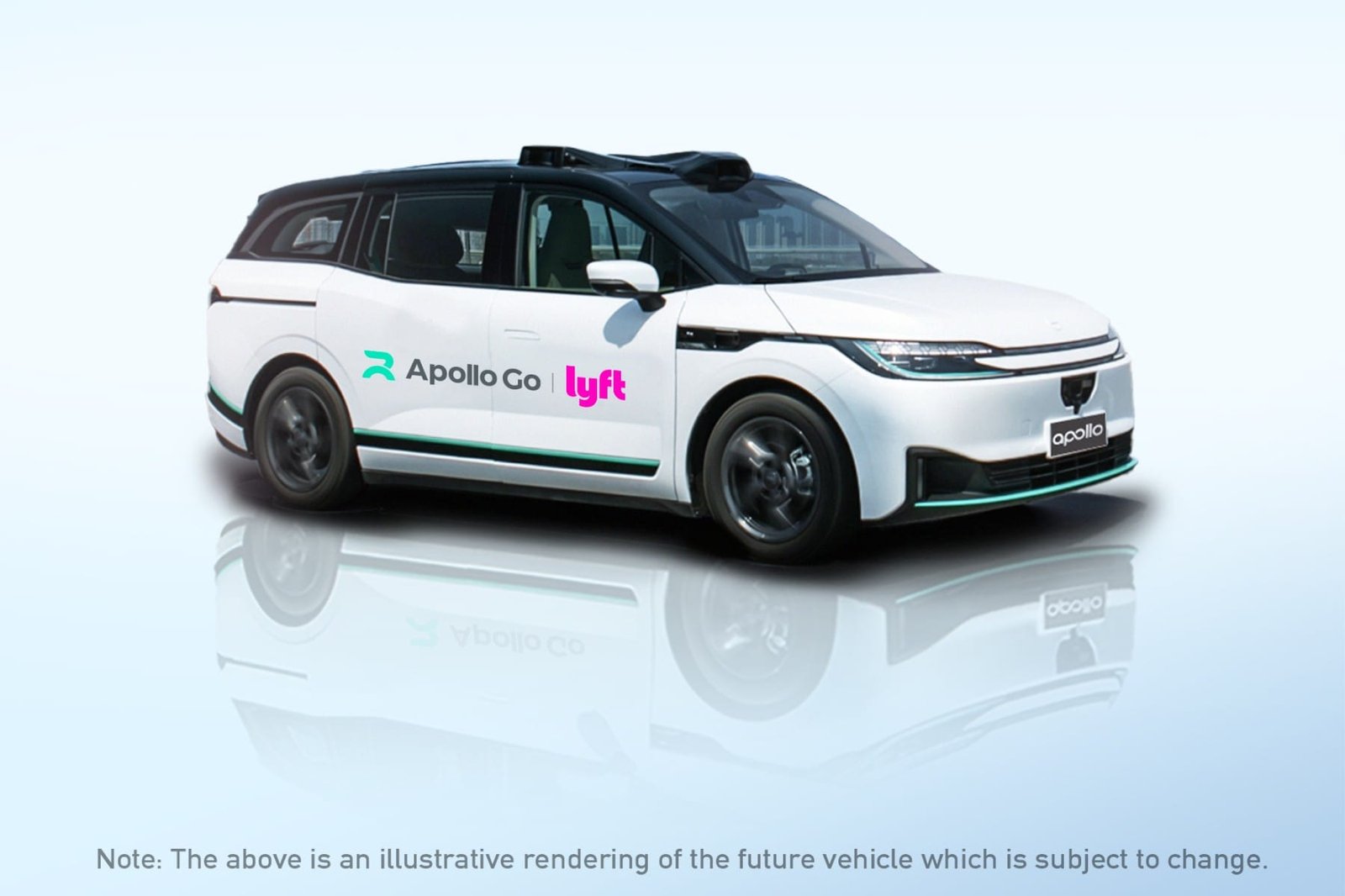Ride & Mobility
Non-Emergency Medical Transportation Strategic Business Report 2025 | Market to Reach $24.3 Billion by 2030 – Participation of Ride-Hailing Giants Expands Service Reach and Cost Flexibility – ResearchAndMarkets.com

The “Non-Emergency Medical Transportation – Global Strategic Business Report” report has been added to ResearchAndMarkets.com’s offering.
The global market for Non-Emergency Medical Transportation was estimated at US$16.2 Billion in 2024 and is projected to reach US$24.3 Billion by 2030, growing at a CAGR of 7.0% from 2024 to 2030. This comprehensive report provides an in-depth analysis of market trends, drivers, and forecasts, helping you make informed business decisions. The report includes the most recent global tariff developments and how they impact the Non-Emergency Medical Transportation market.
Growth in the non emergency medical transportation market is driven by several factors.
Expanding coverage of NEMT services in public insurance plans has increased demand and funding. Providers are adopting advanced digital dispatch, routing, and tracking software to improve service efficiency and regulatory compliance. Partnerships with ride-hailing networks and telehealth platforms are supporting new integrated care offerings.
Focus on patient outcomes and appointment attendance is motivating payers to reimburse more extensively for reliable NEMT services. Regulatory emphasis on accessible, safe medical transport continues encouraging investment in driver training and accessible vehicle fleets. Meanwhile, demand for convenient, on demand mobility solutions, especially among aging and mobility-impaired populations, is strengthening long term market growth.
How Are Regulatory Shifts and Health Policies Reshaping Non Emergency Medical Transportation?
Non-emergency medical transportation (NEMT) services provide vital mobility for patients who need assistance reaching appointments but do not require emergency care. Over the past few years, health policies have increasingly recognized reliable NEMT as essential to improving access and reducing hospital readmissions. Many public and private health insurers now include NEMT in benefit packages to ensure equitable care delivery. New regulations around Medicaid and value based care emphasize performance metrics-such as timeliness, safety, and patient satisfaction-pushing providers to upgrade services and infrastructure.
As healthcare systems transition from fee-for-service models to outcome-based payment, NEMT providers must demonstrate efficiency and quality standards. Licensing requirements, data transparency mandates, and safety audits have raised the bar for operational readiness. This regulatory environment encourages investment in fleet maintenance, driver training, and service monitoring platforms. It also prompts collaboration between healthcare networks, payers, and NEMT agencies to align on performance goals and agreed-upon standards.
What Role Is Technology Playing in Enhancing Service Efficiency and Safety?
Technology has become a cornerstone of modern NEMT operations. Sophisticated booking systems, often with cloud-based dashboards, allow coordination across providers and care settings. Real-time GPS monitoring, digital check-in features, and automated arrival notifications provide visibility into driver location and patient status. AI-driven routing and dynamic dispatch algorithms help minimize wait times, reduce idle mileage, and optimize resource allocation.
Equipped vehicles now integrate safety technology, such as wheelchair securement systems, driver-assist cameras, and emergency alert functions. Electronic logging tools record trip details and patient interactions to comply with regulatory documentation and audit requirements. Mobile apps offer patients and caregivers easy access to trip details, reminders, and driver credentials. These integrated systems are improving trust, reducing missed appointments, and helping agencies manage higher service volumes with fewer resources.
How Are Revenue Models and Partnerships Evolving in the NEMT Sector?
Traditional NEMT providers often relied on contracts from Medicaid and hospital networks. Today, innovative models are emerging alongside those partnerships. Ride-share integration, shared mobility programs, and broker systems are reshaping how services are delivered and reimbursed. Through app-based platforms, agencies can dispatch rides on demand while maintaining compliance with medical transport requirements.
Some NEMT providers are forming alliances with telehealth platforms, care-at-home programs, and chronic care management services. These partnerships allow for bundled care delivery, where transportation is coordinated alongside remote monitoring or in-home nursing visits. Outcome-based reimbursement models reward reduced no-show rates and better care continuity. Investment in NEMT technology startups has also attracted venture funding, enabling market entrants to scale rapidly through platform-driven efficiency and innovative service offerings.
Report Features:
- Comprehensive Market Data: Independent analysis of annual sales and market forecasts in US$ Million from 2024 to 2030.
- In-Depth Regional Analysis: Detailed insights into key markets, including the U.S., China, Japan, Canada, Europe, Asia-Pacific, Latin America, Middle East, and Africa.
- Company Profiles: Coverage of players such as ABC Non-Emergency Medical Transportation LLC, Acadian Ambulance Service, Inc., American Medical Response (AMR), Ambulnz, CareSafe Transportation and more.
- Complimentary Updates: Receive free report updates for one year to keep you informed of the latest market developments.
Key Insights:
- Market Growth: Understand the significant growth trajectory of the Private Pay Patient Transportation Service segment, which is expected to reach US$13.2 Billion by 2030 with a CAGR of a 6.0%. The Insurance Backed Patient Transportation Service segment is also set to grow at 8.0% CAGR over the analysis period.
- Regional Analysis: Gain insights into the U.S. market, estimated at $4.4 Billion in 2024, and China, forecasted to grow at an impressive 10.8% CAGR to reach $5.0 Billion by 2030. Discover growth trends in other key regions, including Japan, Canada, Germany, and the Asia-Pacific.
Scope of Study:
- Service (Private Pay Patient Transportation Service, Insurance Backed Patient Transportation Service, Courier Services)
- Application (Dialysis Application, Routine Doctor Visits Application, Mental Health Related Appointments Application, Rehabilitation Application)
- End-Use (Hospitals & Clinics End-Use, Nursing Homes End-Use, Homecare Settings End-Use, MCO & State Agencies End-Use, Healthcare Payers End-Use)
Key Attributes:
| Report Attribute | Details |
| No. of Pages | 374 |
| Forecast Period | 2024 – 2030 |
| Estimated Market Value in 2024 | 16.2 Billion |
| Forecasted Market Value by 2030 | 24.3 Billion |
| Compound Annual Growth Rate | 7.0% |
| Regions Covered | Global |
Key Topics Covered:
MARKET OVERVIEW
- Influencer Market Insights
- World Market Trajectories
- Tariff Impact on Global Supply Chain Patterns
- Non-Emergency Medical Transportation – Global Key Competitors Percentage Market Share in 2025 (E)
- Competitive Market Presence – Strong/Active/Niche/Trivial for Players Worldwide in 2025 (E)
MARKET TRENDS & DRIVERS
- Rising Demand for Accessible Healthcare Services Drives Growth in Non-Emergency Medical Transportation (NEMT)
- Increase in Aging Population and Chronic Disease Prevalence Expands Utilization of Routine Medical Travel Services
- Expansion of Government-Funded Healthcare Programs Supports Reimbursement for NEMT Services
- Integration of Ride-Booking Platforms and Digital Scheduling Tools Enhances Operational Efficiency
- Growing Emphasis on Reducing Missed Appointments Strengthens Business Case for Reliable Transport Access
- Shift Toward Value-Based Care Encourages Health Systems to Partner with NEMT Providers
- Use of GPS and Real-Time Tracking Technologies Improves Safety and Coordination Across Transport Networks
- Rise in Ambulatory and Home-Based Care Models Increases Need for Scheduled, Non-Urgent Patient Mobility
- Participation of Ride-Hailing Giants in Healthcare Logistics Expands Service Reach and Cost Flexibility
- Availability of Specialized Vehicles and Trained Drivers Supports Transport of Patients with Mobility Limitations
- Growth in Dialysis, Rehabilitation, and Physical Therapy Visits Drives Repeat NEMT Utilization
- Telehealth Integration Spurs Hybrid Care Models Where NEMT Supports In-Person Diagnostics or Treatments
FOCUS ON SELECT PLAYERS | Some of the 32 companies featured in this Non-Emergency Medical Transportation report
- ABC Non-Emergency Medical Transportation LLC
- Acadian Ambulance Service, Inc.
- American Medical Response (AMR)
- Ambulnz
- CareSafe Transportation
- Coastal Medical Transportation Systems LLC
- Crothall Healthcare
- Elite Medical Transport
- Falck a/S
- Global Medical Response, Inc.
- Lifeline VMT
- LogistiCare Solutions (ModivCare)
- London Medical Transportation Systems Inc.
- MediTrans
- MTM, Inc.
- Ridesharing Health (Uber Health/Lyft Health)
- Southeastrans, Inc.
- Transdev Group SA
- Veyo LLC
- Xpress Transportation
For more information about this report visit https://www.researchandmarkets.com/r/m9srhn
About ResearchAndMarkets.com
ResearchAndMarkets.com is the world’s leading source for international market research reports and market data. We provide you with the latest data on international and regional markets, key industries, the top companies, new products and the latest trends.
View source version on businesswire.com: https://www.businesswire.com/news/home/20250805000282/en/
Ride & Mobility
Apollo Go teams up with Lyft for Europe launch

Apollo Go, Baidu’s autonomous ride-hailing unit, announced a strategic partnership with Lyft, a global mobility platform, on Monday, marking a significant step in the Chinese tech giant’s international expansion.
According to the statement, Apollo Go will launch autonomous ride-hailing services in Europe via Lyft’s vast transportation networks by 2026. Using its sixth-generation autonomous vehicles, the services will first launch in Germany and the United Kingdom.
The partnership also envisions expanding the fleet to several thousand vehicles across Europe in the following years, driving large-scale commercialization of autonomous mobility in the region, the companies said.
“This collaboration with Lyft to launch autonomous ride-hailing in Europe, starting with Germany and the UK, is a major milestone in Apollo Go’s globalization strategy,” said Robin Li, co-founder, chairman and CEO of Baidu.
Li added that Baidu will continue to deepen the integration of its cutting-edge autonomous driving technology with Lyft’s operational expertise, delivering safer, greener and more efficient mobility experiences to users across Europe.
Lyft CEO David Risher also noted that as the Chinese tech heavyweight operates the world’s largest autonomous ride-hailing platform, the cooperation is expected to bring invaluable experience to the table.
“This means we can offer the benefits of autonomous mobility — safety, reliability, and privacy — to millions of users across Europe,” Risher said.
Apollo Go has been accelerating its global footprint through worldwide collaborations. Earlier this year, the company launched pilot services in Dubai and Abu Dhabi. More recently, it reached a separate agreement with Uber to integrate thousands of autonomous vehicles into Uber’s global ride-hailing network.
The tech player is also playing a growing role in advancing smart mobility and enriching cultural tourism in China.
Earlier this month, the company launched Hainan province’s first full-scenario autonomous ride-hailing service in the province’s capital city of Haikou, with pilot routes covering major cultural and tourist landmarks such as Holiday Beach and Qilou Old Street.
Local residents and tourists can conveniently hail a ride via a mobile app or WeChat mini-program and have the option of activating a Hainan-style voice assistant during the ride, according to Apollo Go.
“I used to just see autonomous vehicles online, now it’s actually in my city!” said a Haikou resident surnamed Yang.
“The ride was incredibly smart and user-friendly. You can even recline the seat and enjoy a massage. I can see that visitors are amazed by the high-tech vibe of transportation in Hainan,” Yang said.
“We hope smart mobility can ease travel congestion during peak seasons while offering a unique experience that reflects both the convenience of the free trade port and the laid-back lifestyle of Hainan,” said an official from the Hainan provincial department of culture, radio, film, television, publications and sports.
According to Apollo Go, the company has to date deployed over 1,000 autonomous vehicles across 15 cities globally, delivering more than 11 million rides, with domestic coverage including major cities such as Beijing; Shanghai; Guangzhou and Shenzhen in Guangdong province; and Haikou.
Fan Feifei contributed to this story.
lijiaying@chinadaily.com.cn
Ride & Mobility
Can Ride Hails & Eats Handle Robotaxi Disruption?

Uber (NYSE:UBER) will report Q2 2025 earnings after the market close on August 6. Analysts expect earnings of $0.63 per share and revenue of roughly $12.5 billion, a 17% top-line growth YoY. Shares are up 40% year-to-date but have fallen more than 10% since hitting a 52-week high in June, suggesting high expectations that now face a test.
Investor focus will fall on mobility versus delivery performance and margin leverage. Ride-share volume, take rate stability, and profitability in Eats remain critical. Any sign of pricing or operational tension could dampen enthusiasm. Uber guided between $45.75 and $47.25 billion in gross bookings for Q2, implying 16% to 20% YoY growth. Daily average bookings per consumer (MAPCs) and overall trip volume trends will be closely watched, especially as the rides and Eats profit mix shifts toward scalable cash flow.
Robotaxi competition is intensifying. Uber’s partnership with Lucid (NASDAQ:LCID) and Nuro’s autonomous system creates a long-term plan to deploy 20,000 Lucid vehicles with Level 4 autonomy starting in 2026. Meanwhile, Google’s (NASDAQ:GOOG)(NASDAQ:GOOGL) Waymo continues scaling independently, launching in new markets like Dallas in 2026 without Uber’s app support, and Tesla (NASDAQ:TSLA) has quietly begun trials in Austin with supervised robotaxis, aiming to expand to multiple states by mid-2026. Investors will weigh whether Uber’s multi-partner robotaxi approach drives differentiation or signals strategic dilution.
With ride-hail and delivery expected to support near-term cash flow and robotaxi ambitions guiding long-term upside, Q2 results and the call will need to balance tactical strength with strategic clarity.
This article first appeared on GuruFocus.
Ride & Mobility
Lyft and Baidu to launch autonomous electric ride-hailing in Europe from 2026

Baidu and Lyft have announced a strategic partnership that will see the deployment of Apollo Go’s autonomous electric vehicles on the Lyft platform in key European markets. The rollout will begin in Germany and the United Kingdom starting next year. However, the plan is still subject to regulatory approval.
The companies state that their long-term goal is to expand the fleet to thousands of vehicles across Europe.
Under the agreement, Lyft will integrate Baidu’s sixth-generation RT6 autonomous vehicles into its platform as a flagship autonomous vehicle (AV) offering for the region. The RT6, a purpose-built electric vehicle designed specifically for autonomous ride-hailing, features Baidu’s latest Apollo ADFM (Autonomous Driving Foundation Model), a multi-layer safety architecture, and real-time intelligent interaction systems.
“This collaboration represents our commitment to making autonomous mobility accessible worldwide while working with local partners who understand their communities,” said Robin Li, Co-founder, Chairman and CEO of Baidu. “By integrating Baidu’s cutting-edge autonomous driving technology with Lyft’s platform reach and operational expertise, we’re excited to deliver safer, greener, and more efficient mobility solutions to more users.”
The partnership gives Baidu a foothold in the European market, while Lyft enhances its AV strategy by incorporating fully electric autonomous vehicles into its offering. Lyft will retain ownership of the operational marketplace, while Baidu will provide vehicle supply, technology validation and technical support. According to the companies, this approach aligns with Lyft’s hybrid network model, where autonomous and human-driven vehicles coexist to optimise rider experience.
“Our partnership with Baidu is all about creating a great customer experience,” said David Risher, CEO of Lyft. “Their extensive track record operating the world’s largest autonomous ride-hailing service means we can bring all the benefits of AVs — safety, reliability, and privacy — to millions of Europeans.”
The partnership also leverages Lyft’s 2025 acquisition of FREENOW, a multi-modal platform with operations in over 180 cities across nine European countries. FREENOW’s local market knowledge, existing regulatory relationships, and infrastructure in the UK and Germany are seen as key enablers for the first phase of deployment.
Baidu just signed a similar agreement with Uber. Together, they will offer the Apollo Go cars in regions in Asia and the Middle East. However, no specific countries were named at this point.
What is clear is that Baidu’s robotaxi subsidiary, Apollo Go, already has a fleet of over 1,000 autonomous vehicles operating in 15 cities, including Dubai and Abu Dhabi. Baidu has long been ambitious in this field: The company has been experimenting with self-driving cars since 2013 and has now developed six generations of robotaxis in China. At the same time, its Apollo division is also making the technology available to car manufacturers. Baidu’s current robotaxi, called Yichi 06, has five lidars and no steering wheel. Apollo Go’s largest fleet of 400 robotaxis is currently on the road in Wuhan.
-

 Brand Stories2 weeks ago
Brand Stories2 weeks agoBloom Hotels: A Modern Vision of Hospitality Redefining Travel
-

 Brand Stories2 weeks ago
Brand Stories2 weeks agoCheQin.ai sets a new standard for hotel booking with its AI capabilities: empowering travellers to bargain, choose the best, and book with clarity.
-

 Destinations & Things To Do2 weeks ago
Destinations & Things To Do2 weeks agoUntouched Destinations: Stunning Hidden Gems You Must Visit
-

 Destinations & Things To Do2 weeks ago
Destinations & Things To Do2 weeks agoThis Hidden Beach in India Glows at Night-But Only in One Secret Season
-

 AI in Travel2 weeks ago
AI in Travel2 weeks agoAI Travel Revolution: Must-Have Guide to the Best Experience
-

 Brand Stories1 month ago
Brand Stories1 month agoVoice AI Startup ElevenLabs Plans to Add Hubs Around the World
-

 Brand Stories4 weeks ago
Brand Stories4 weeks agoHow Elon Musk’s rogue Grok chatbot became a cautionary AI tale
-

 Brand Stories2 weeks ago
Brand Stories2 weeks agoContactless Hospitality: Why Remote Management Technology Is Key to Seamless Guest Experiences
-

 Asia Travel Pulse1 month ago
Asia Travel Pulse1 month agoLooking For Adventure In Asia? Here Are 7 Epic Destinations You Need To Experience At Least Once – Zee News
-

 AI in Travel1 month ago
AI in Travel1 month ago‘Will AI take my job?’ A trip to a Beijing fortune-telling bar to see what lies ahead | China

You must be logged in to post a comment Login